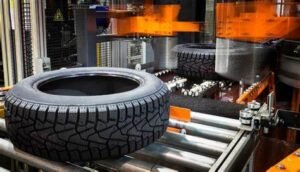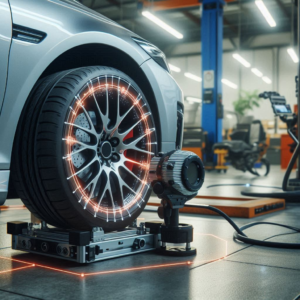In the intricate dance of automotive maintenance, there’s one partner that ensures your vehicle glides smoothly along the road – proper wheel alignment. Just like a choreographer guides dancers to move in harmony, a well-chosen wheel alignment system harmonizes your car’s wheels for optimal performance. But with a multitude of options on the market, how do you pick the one that’s the perfect fit? Let’s embark on this journey together and discover the key steps to choosing the right wheel alignment system.
1. Identify Your Needs:
Before selecting any equipment, take a step back and evaluate your garage’s unique requirements. Consider the types of vehicles you service, the volume of alignment work you handle, and the level of precision your clients expect. This understanding is your compass, pointing you in the right direction.
2. 2D or 3D:
Much like choosing between a classic book and a modern e-reader, you must decide between 2D and 3D alignment systems. 2D systems measure only two angles of wheel alignment, while 3D systems provide a comprehensive three-dimensional view. If you’re aiming for the pinnacle of precision, a 3D system is the clear choice.
3. Ease of Use:
Think of your alignment system as a trusted assistant. It should make your job easier, not more complicated. Look for systems with intuitive interfaces and user-friendly software. This ensures that your technicians can swiftly adapt to the equipment and maximize its efficiency.
4. Speed Matters:
In the fast-paced world of automotive servicing, time is money. Speedy alignment systems can significantly boost your garage’s throughput. Choose a system that offers swift measurements without compromising accuracy.
5. Mobility and Space:
Consider the layout of your garage. Do you have ample space for a fixed alignment bay, or do you need a mobile system that can be moved around as needed? Mobile systems offer flexibility, while fixed setups may provide more stability.
6. Vehicle Compatibility:
Not all alignment systems are created equal. Ensure that the system you choose is compatible with the vehicles you service. Some high-end vehicles require specialized alignment equipment, so keep this in mind.
7. Quality and Durability:
Reliability is paramount. Investigate the reputation of the manufacturer and the system’s build quality. A robust, durable system is an investment that will pay dividends over time.
8. Training and Support:
Even the best equipment is only as good as the people using it. Ensure that the manufacturer offers comprehensive training for your technicians. Additionally, inquire about the availability of technical support in case you encounter any issues down the road.
9. Future-Proofing:
The automotive industry is constantly evolving. Ensure that the alignment system you choose can receive software updates and adapt to emerging technologies. Future-proofing your investment safeguards against obsolescence.
10. Cost Considerations:
While cost should never be the sole factor, it’s undeniably a crucial one. Balance your budget with the system’s features, capabilities, and potential return on investment. Sometimes, paying a bit more upfront for a high-quality system can lead to long-term savings and improved customer satisfaction.
Conclusion: Your Alignment Ally
Choosing the right wheel alignment system is akin to selecting the perfect partner for a dance. It should complement your garage’s needs, enhance precision, and make your operations smoother. With careful consideration, you’ll find an alignment system that ensures your clients’ vehicles glide effortlessly down the road, leaving them delighted and coming back for more. So, step confidently onto the road of precision, and let your chosen alignment system lead the way to automotive excellence.









Leave a reply